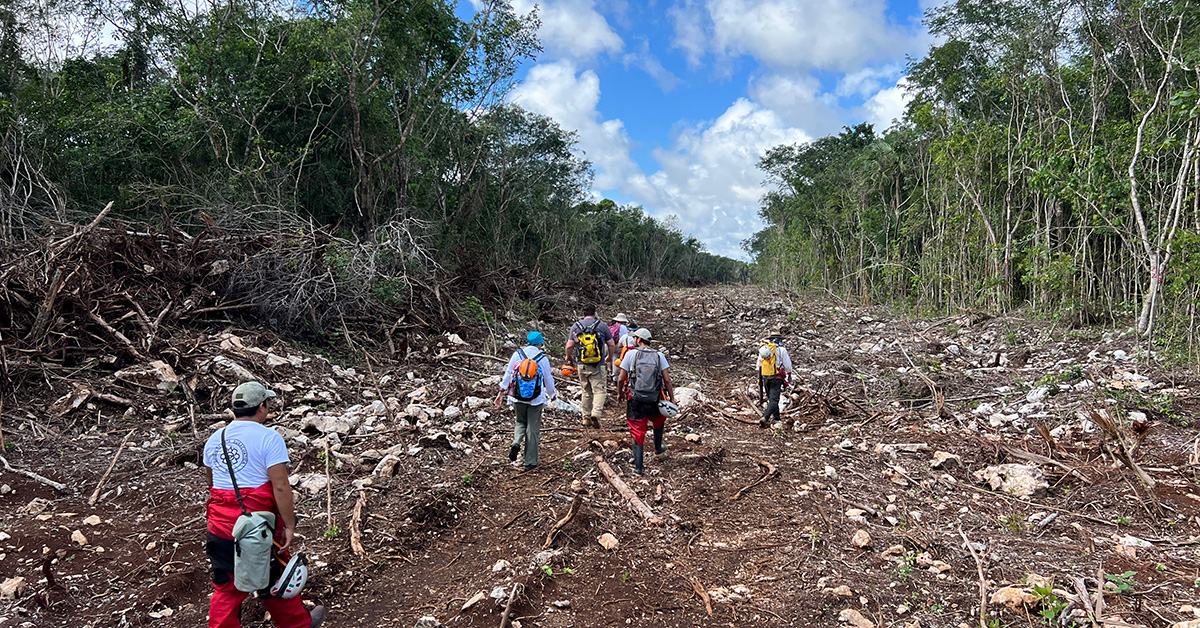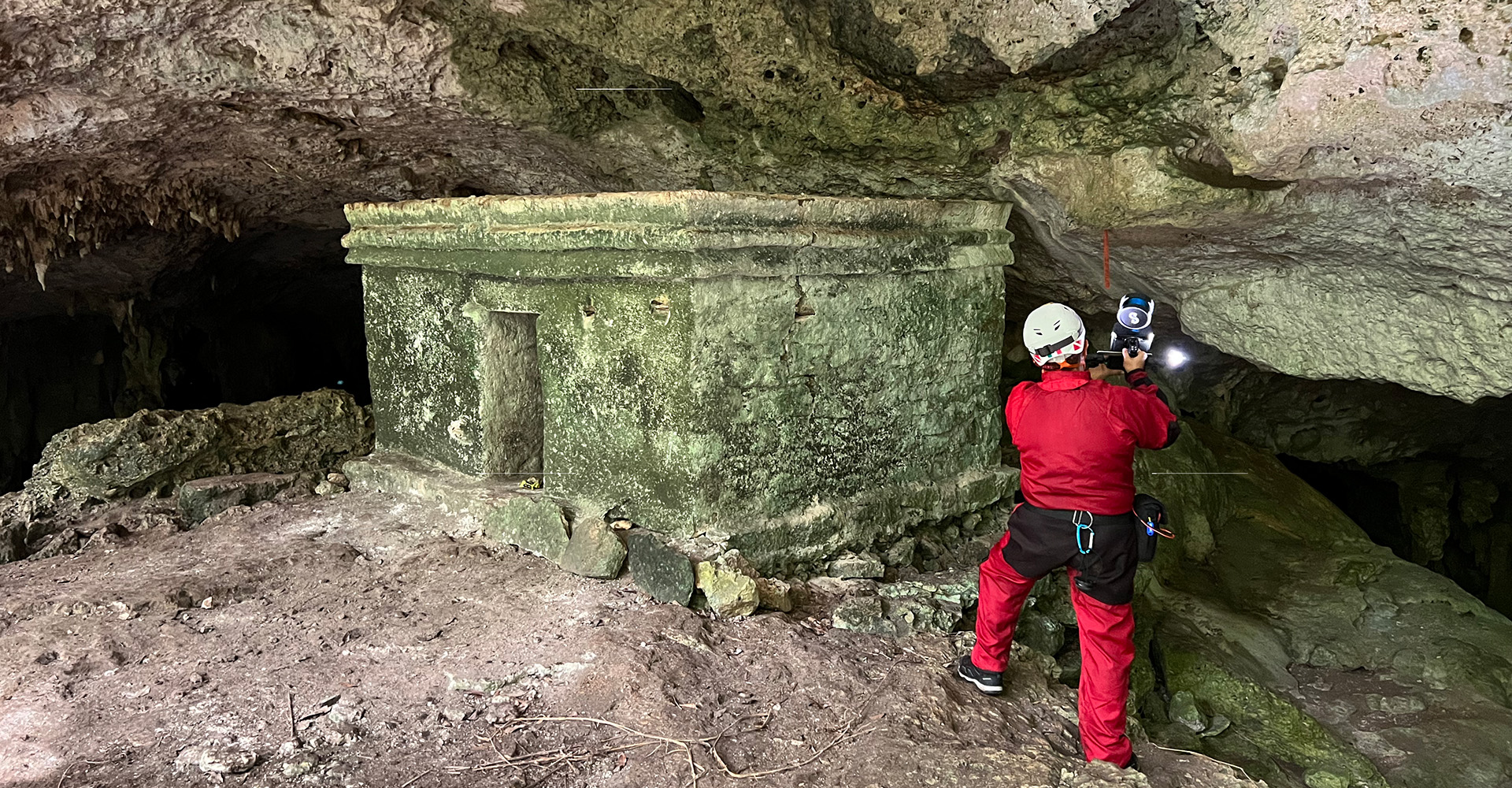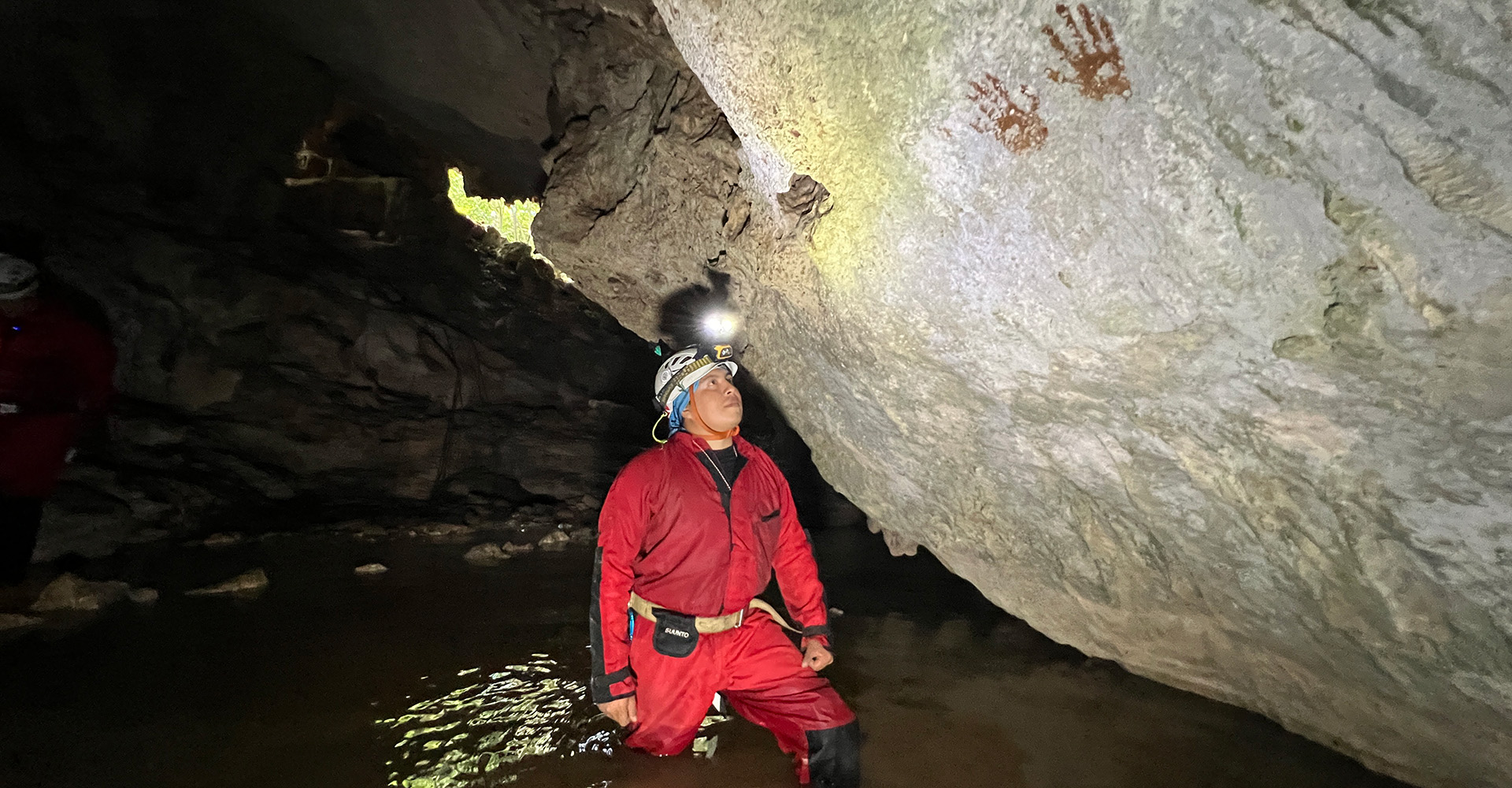UC San Diego Scientists Race to Document Mexico's Maya Ruins
 A team from the UC San Diego Qualcomm Institute and Mexico's National Institute of Anthropology and History walk a recently cleared section of the Yucatán jungle. The path makes way for the Maya Train, an infrastructure project that will run near or directly overhead caves containing Maya ruins.
A team from the UC San Diego Qualcomm Institute and Mexico's National Institute of Anthropology and History walk a recently cleared section of the Yucatán jungle. The path makes way for the Maya Train, an infrastructure project that will run near or directly overhead caves containing Maya ruins.
Published Date
January 24, 2023
When archaeologist Dominique Rissolo’s phone rang last summer, it was a colleague from Mexico’s National Institute of Anthropology and History (INAH) calling with a time-sensitive request.
The team at INAH were scrambling to meet a huge challenge in the face of the Maya Train, an enormous infrastructure project under construction in southern Mexico. Projected to run nearly 1,000 miles long, its path starts in Palenque and weaves through dense jungle to make a complete circuit of the Yucatán Peninsula. In some cases, this proposed route cuts within 100 feet or even directly over caves containing centuries-old Maya ruins.
Helena Barba Meinecke, a professor and researcher with INAH, asked whether Rissolo and his colleagues could return to the Mexican state of Quintana Roo to aid her team in taking laser scans of known sites and sites newly discovered during the clearing of the train’s right-of-way.
“There wasn’t much time to lose,” said Rissolo, a research scientist with the UC San Diego Qualcomm Institute (QI) and an associate director of the Scripps Center for Marine Archaeology. “Our Mexican colleagues have considerable expertise and are committed to documenting and safeguarding the nation’s cultural patrimony, but the scale and pace of the Maya Train project is in some ways unprecedented.”
. . .

INAH’s Helena Barba Meinecke uses the hovermap to scan the underground shrine at Oratorio/Ocho Balas.
. . .

A member of INAH studies handprints left behind by ancient Maya. The Maya used a reddish-brown pigment called ochre to leave their mark on the cave, which is now known as “Las Manitas.”
More:
https://today.ucsd.edu/story/uc-san-diego-scientists-race-to-document-mexicos-maya-ruins


